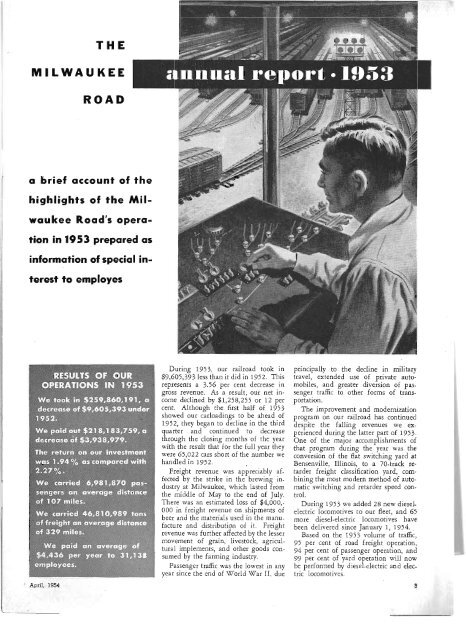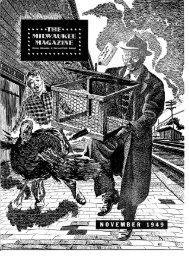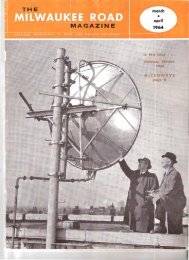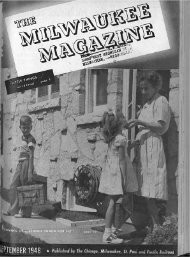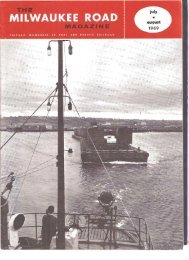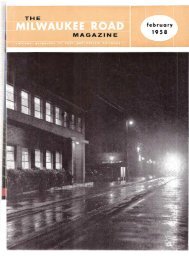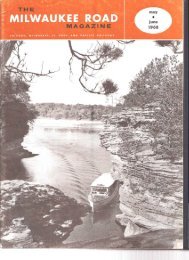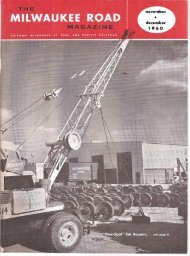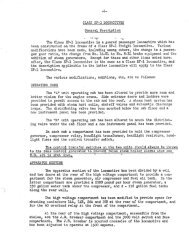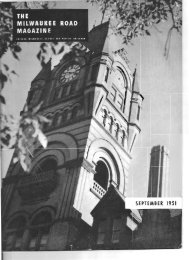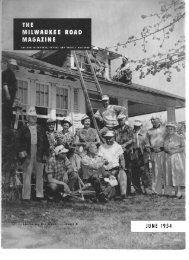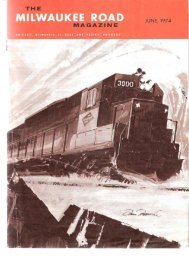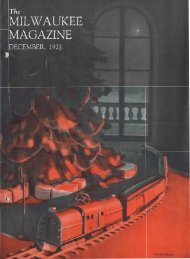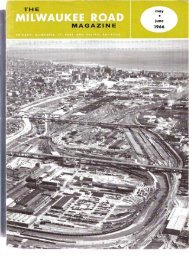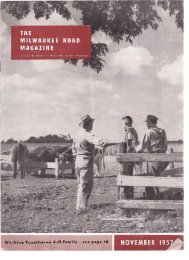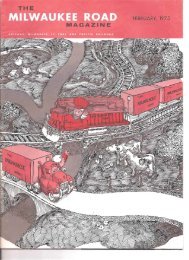April, 1954 - Milwaukee Road Archive
April, 1954 - Milwaukee Road Archive
April, 1954 - Milwaukee Road Archive
Create successful ePaper yourself
Turn your PDF publications into a flip-book with our unique Google optimized e-Paper software.
THE<br />
MILWAUKEE<br />
ROAD<br />
a brief account of the<br />
highlights of the MiI,<br />
waukee <strong>Road</strong>'s opera<br />
tion in 1953 prepared as<br />
information of-special in<br />
terest to employes<br />
<strong>April</strong>. )954<br />
During 1953, our railroad took in<br />
$9,605,393 less than it did in 1952. This<br />
represents a 3.56 per cent decrease in<br />
gross revenue. As a result, our net income<br />
declined by $1,258,255 or 12 per<br />
cent. Although the first half of 1953<br />
showed our carloadings to be ahead of<br />
1952, they began to decline in the third<br />
quarter and continued to decrease<br />
through the closing months of the year<br />
with the result that for the full year they<br />
were 65,022 cars short of the number we<br />
handled in 1952. .<br />
Freight revenue was appreciably affected<br />
by the strike in the brewing industry<br />
at <strong>Milwaukee</strong>, which lasted from<br />
the middle of May to the end of July.<br />
There was an estimated loss of $4,000,<br />
000 in freight revenue on shipments of<br />
beer and the materials used in the manufacture<br />
and distribution of it, Freight<br />
revenue was further affected by the lesser<br />
movement of grain, livestock, agricultural<br />
implements, and other goods consumed<br />
by the farming industry,<br />
Passenger traffic was the lowest in any<br />
year since the end of World War II, due<br />
principally to the decline in military<br />
travel, extended use of private automobiles,<br />
and greater diversion of pas.<br />
senger traffic to other forms of trans.<br />
portation.<br />
The improvement and modernization<br />
program on our railroad has continued<br />
despite the falling revenues we experienced<br />
during the latter part of 1953.<br />
One of the major accomplishments of<br />
that program during the year was the<br />
conversion of the flat switching yard at<br />
Bensenville, Illinois, to a 70.track retarder<br />
freight classification yard, com·<br />
bining the most modern method of auto·<br />
matic switching and retarder speed can·<br />
trol.<br />
During 1953 we added 28 new diesel.<br />
electric locomotives to our fleet, and 65<br />
more diesel·electric locomotives have<br />
been delivered since January 1, <strong>1954</strong>..<br />
Based on the 1953 volume of traffic,<br />
95 per cent of road freight operation,<br />
94 per cent of passenger operation, and<br />
99 per cent of yard operation will now<br />
be performed by diesel-electric and electric<br />
locomotives.


